Lecce
Baroque architecture and artistic flair, Lecce is the main town of Puglia’s Salento region and a definite highlight.
A wonderful journey through the heritage, gastronomy and coast of the south eastern region of Puglia.
This holiday idea uncovers some of Italy’s best kept secrets – those the locals would prefer to keep to themselves. Mountain villages, endless beaches and architecture to rival Florence.
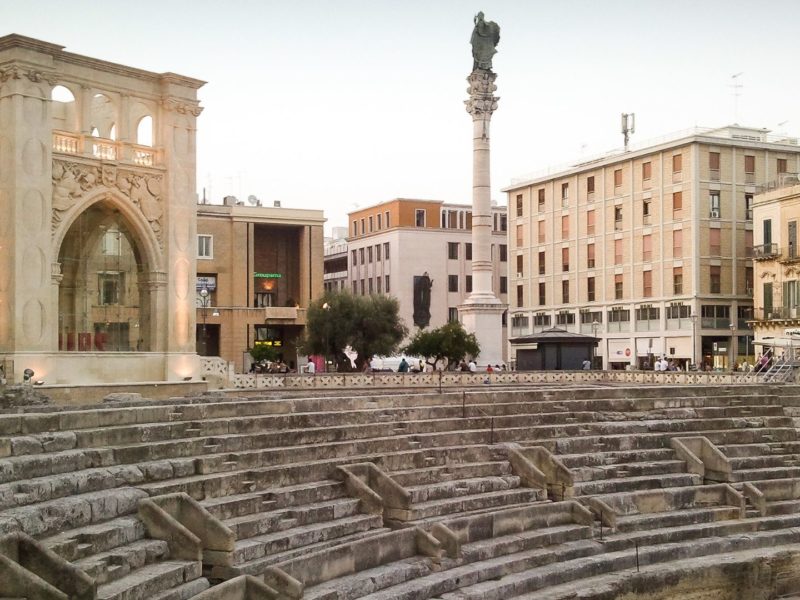
Baroque architecture and artistic flair, Lecce is the main town of Puglia’s Salento region and a definite highlight.
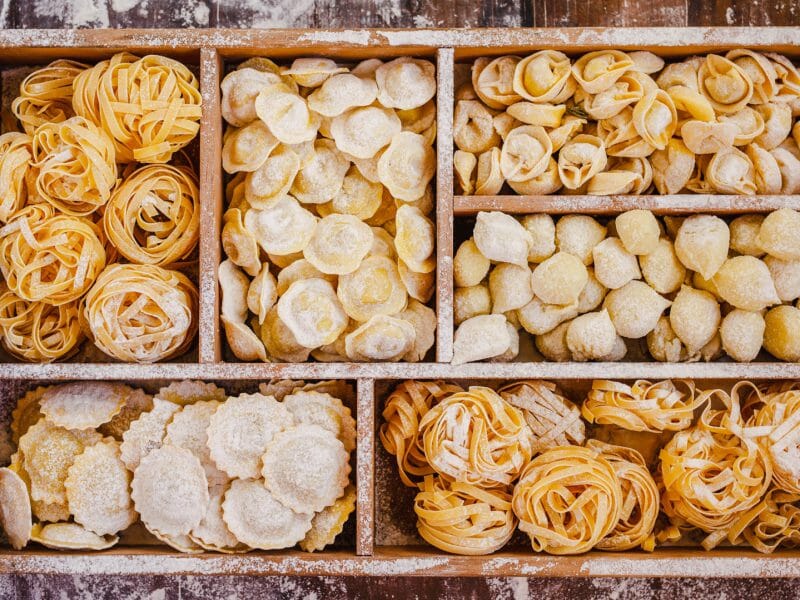 2
2
Visit a sustainable olive oil farm, have a go at making mozzarella and stay in a traditional Italian Masseria.
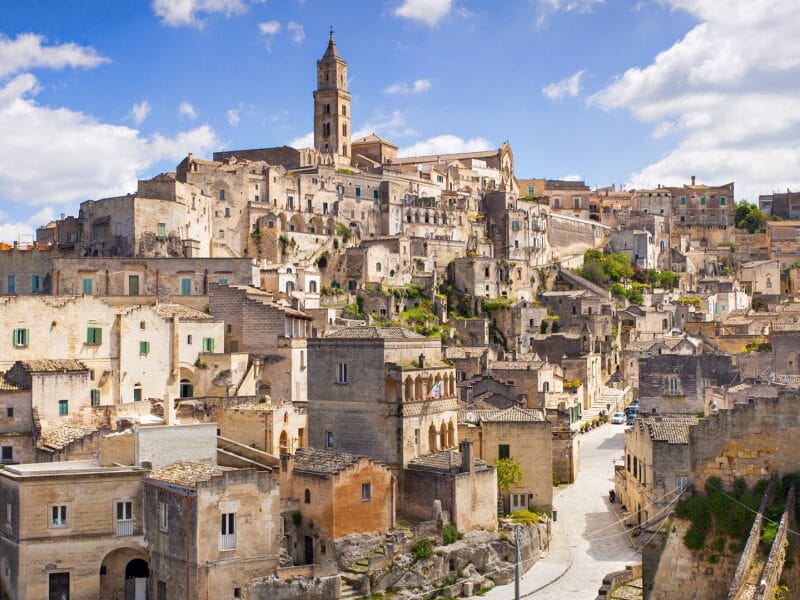 3
3
A UNESCO World Heritage Site, Matera is home to stone houses, rock churches and a 13th century cathedral.
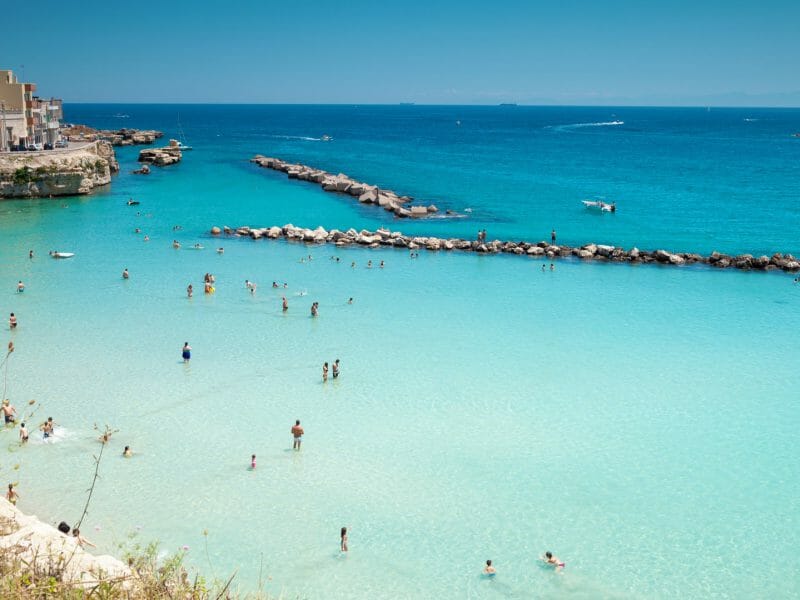
Spend time on the Puglian coast with its golden sandy beaches, crystal clear waters and stunning natural beauty.
Day 1
Brindisi - Lecce (La Fiermontina)
Day 2
Lecce (La Fiermontina)
Day 3
Lecce - Ostuni - Lecce (La Fiermontina)
Day 4
Lecce - Gallipoli - Lecce (La Fiermontina)
Day 5
Lecce - Matera (Cave Hotel)
Day 6
Matera (Cave Hotel)
Day 7
Matera - Fasano (Masseria Torre Maizza)
Days 8 - 9
Fasano (Masseria Torre Maizza)
Day 10
Fasano - Brindisi
Day 1
Brindisi - Lecce (La Fiermontina)
Arrive into Brindisi and transfer to Lecce to check into your accommodation.
Day 2
Lecce (La Fiermontina)
Wander the streets of Lecce exploring the Baroque architecture and sites such as the Basilica di Santa Crocce and Museo Faggiano, stopping for lunch at a local Pugliese restaurants off the Piazza del Duomo.
Day 3
Lecce - Ostuni - Lecce (La Fiermontina)
Travel around 80 minutes by train or private transfer to the whitewashed hilltop town of Ostuni, known for its Gothic, Romanesque and Byzantine architecture, a labyrinth of medieval backstreets and wonderful views towards the Adriatic Sea. Return to Lecce overnight.
Day 4
Lecce - Gallipoli - Lecce (La Fiermontina)
Travel around 30 minutes to Puglia’s west coast to explore the towns of Galatina, Nardo and Gallipoli. Alternatively continue south to the tip of Puglia and the sea caves of Santa Maria di Leuca.
Day 5
Lecce - Matera (Cave Hotel)
Travel north for around two and a half hours to Matera for a stay in one of the beautiful Sassi stone houses – now small boutique hotels.
Day 6
Matera (Cave Hotel)
Spend the day exploring this fascinating town, full of rock houses, stalagmites and hidden alleyways.
Day 7
Matera - Fasano (Masseria Torre Maizza)
Transfer around two hours to the east coast of Puglia stopping to visit traditional dry stone huts, known as trulli, whose style of construction is specific to the Itria Valley.
Days 8 - 9
Fasano (Masseria Torre Maizza)
Spend two days relaxing with options to explore the nearby fortified town of Monopoli.
Day 10
Fasano - Brindisi
Transfer around 45 minutes south to Brindisi for onward travel.
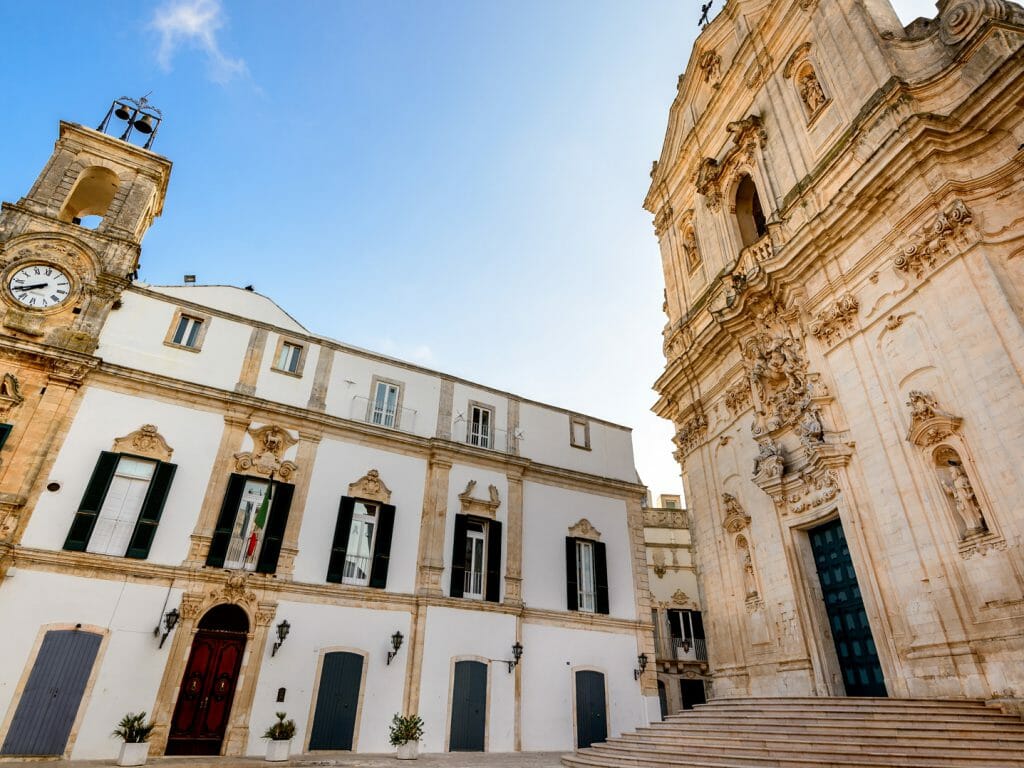
A haven of baroque architecture with its central Piazza del Duomo and Cathedral di Lecce, Lecce, found in the centre of the Salento region of Puglia, is an easy rival to its better known cousin, Florence. Sitting in the heel of Italy, Lecce is the perfect base from which to explore the coastline plus the cultural sites of Galatina, Nardeo and Gallipoli. Lecce has a relaxed air of sophistication, a joy to explore on foot, discovering local restaurants, independent boutiques and galleries. A highlight of this region.
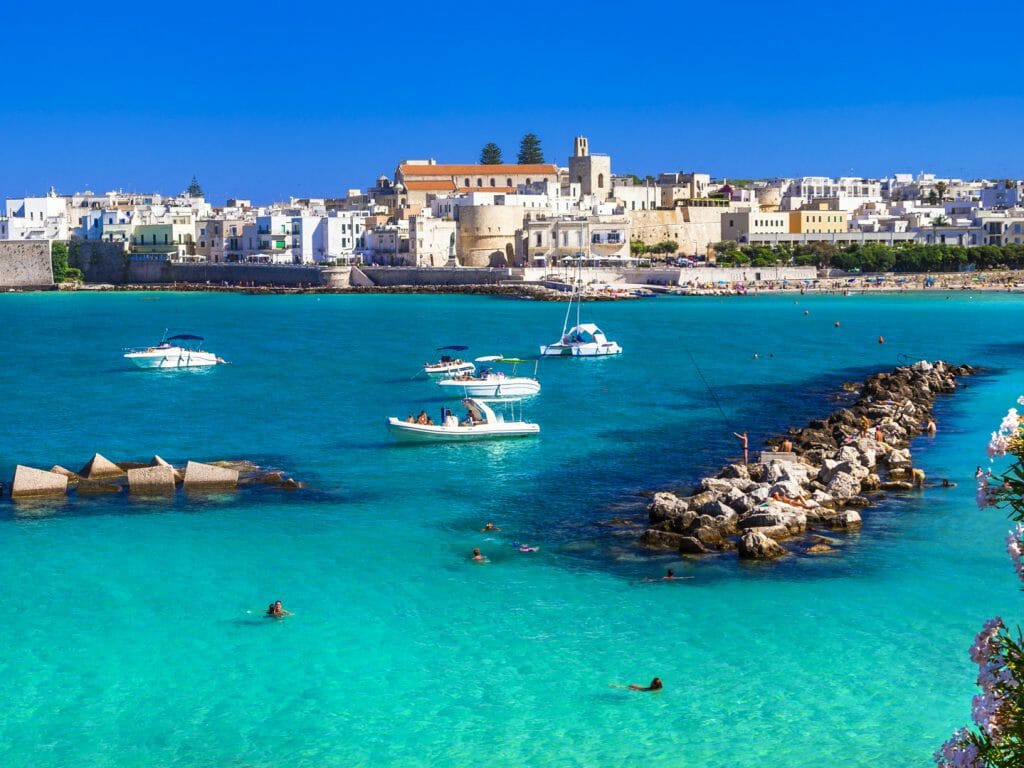
Salento is the most southern part of Puglia and home to coastal towns including Otranto with its unique mosaics and Santa Maria di Leuca, located at the end of Italy’s heel, where the Adriatic sea crashes into the Ionian. The coastline is awash with history, wild landscapes and unique marinas, blending art, culture and endless vistas.
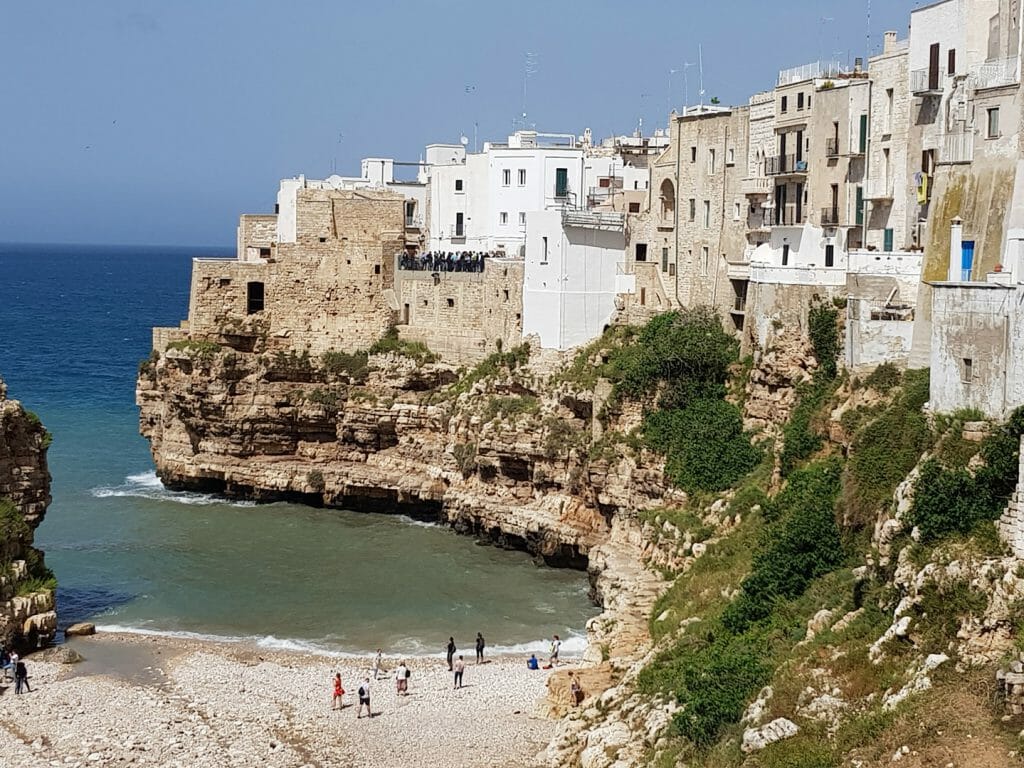
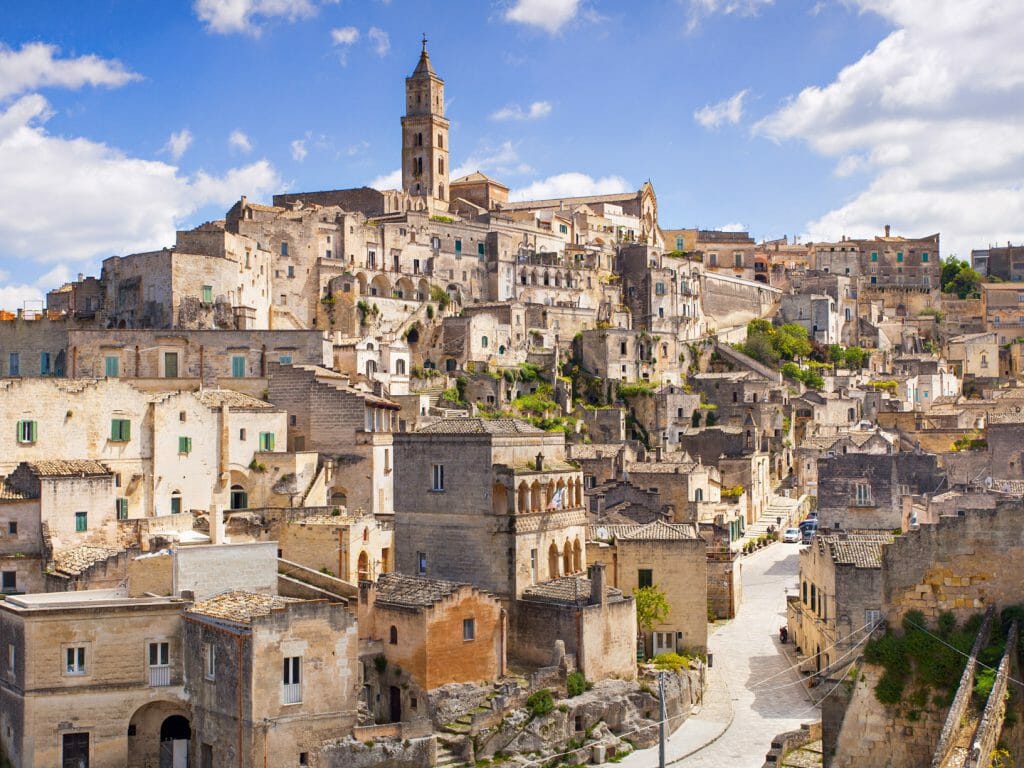
Sun baked villages and towns such as Specchia, Locorotondo and Galatina perch up high, looking down over the olive oil farm lands. The traditional sea ports of Gallipoli, Monopoli and Castro, look out majestically over the Adriatic and Ionian Seas. The towns of Puglia are as varied as its food and architecture – some accessible by train, making them the perfect destination for a long local lunch.
Send us an enquiry
Complete our enquiry form and start your next journey.
Prices will vary depending on the time of year you are travelling. Prices do not include international flights. Please ask one of our Travel Experts for an accurate quote. Flights purchased through Steppes Travel departing from the UK are ATOL protected.
The promise of winter sunshine and milder temperatures make Italy an enticing destination in January. Some attractions will be closed as it is the offseason, but the south of Italy and Sicily will be quiet and very pleasant. The wintertime generally brings the lowest rates and fewest visitors along with chilly temperatures, rain, and often snow in the north. In the south, winter temperatures average around 10°C. There is an exception to winter being low season- in and around any of the mountain ski resorts it is the high season as these areas draw many skiers, snowboarders and other snow sports enthusiasts.
February is generally low season, other than Carnival which falls in the period before Lent, generally during the month of February. Except in beach and island locations, many restaurants, shops and family-run hotels shut down. You can enjoy the major cities without the crowds, and hotels often offer significant discounts. The wintertime generally brings the lowest rates and fewest visitors along with chilly temperatures, rain, and often snow in the north. In the south, winter temperatures average around 10°C. There is an exception to winter being low season- in and around any of the mountain ski resorts it is the high season as these areas draw many skiers, snowboarders and other snow sports enthusiasts.
March is considered shoulder season in Italy and is arguably the best time to visit. Temperatures are typically very comfortable. While you won’t enjoy the lowest rates or the fewest crowds of the year, the shoulder season is an ideal compromise between the low and high seasons.
April is considered shoulder season in Italy and is arguably the best time to visit. Temperatures are typically very comfortable, and in the spring you can hike through the lush, green meadows of the Italian Alps. While you won’t enjoy the lowest rates or the fewest crowds of the year, the shoulder season is an ideal compromise between the low and high seasons.
Early May is considered shoulder season in Italy and is arguably the best time to visit. Temperatures are typically very comfortable, and in the spring you can hike through the lush, green meadows of the Italian Alps. From mid-May through July and again in September, the country will be teeming with visitors, and rates will be at their highest. Expect very warm temperatures throughout the country, with the most extreme heat in the south and just about anywhere inland. If you visit during this season, you can beat the biggest crowds by venturing to smaller villages and lesser-known places, avoiding the big cities like Rome, Venice and Florence.
In June the country will be teeming with visitors, and rates will be at their highest. Expect warm temperatures throughout the country, with the most extreme heat in the south and just about anywhere inland. If you visit during this season, you can beat the biggest crowds by venturing to smaller villages and lesser-known places, avoiding the big cities like Rome, Venice and Florence.
In July the country will be teeming with visitors, and rates will be at their highest. Expect warm temperatures throughout the country, with the most extreme heat in the south and just about anywhere inland. If you visit during this season, you can beat the biggest crowds by venturing to smaller villages and lesser-known places, avoiding the big cities like Rome, Venice and Florence.
August is generally very hot in Italy and considered low season, with practically the entire country going on holiday, especially during the second half. Head for the mountains for cooler climes for exceptional walking and hiking opportunities.
In September the country will be teeming with visitors, and rates will be at their highest. Expect warm temperatures throughout the country, with the most extreme heat in the south and just about anywhere inland. If you visit during this season, you can beat the biggest crowds by venturing to smaller villages and lesser-known places, avoiding the big cities like Rome, Venice and Florence.
Shoulder season is arguably the best time to visit Italy. Temperatures are typically very comfortable. In the autumn, you’ll have food festivals galore to choose from, as well as the grape harvest in October and the olive harvest in November. While you won’t enjoy the lowest rates or the fewest crowds of the year, the shoulder season is an ideal compromise between the low and high seasons.
Shoulder season is arguably the best time to visit Italy. Temperatures are typically very comfortable. In the autumn, you’ll have food festivals galore to choose from like the olive harvest. While you won’t enjoy the lowest rates or the fewest crowds of the year, the shoulder season is an ideal compromise between the low and high seasons.
The promise of winter sunshine and milder temperatures make Italy an enticing destination in December. Some attractions will be closed as it is the offseason, but the south of Italy and Sicily will be quiet and very pleasant. The wintertime generally brings the lowest rates and fewest visitors along with chilly temperatures, rain, and often snow in the north. In the south, winter temperatures average around 10°C. There is an exception to winter being low season- in and around any of the mountain ski resorts it is the high season as these areas draw many skiers, snowboarders and other snow sports enthusiasts.
Our knowledge, curiosity and expertise set us apart, driving us to create remarkable holidays and Beautiful Adventures tailored perfectly to you, carefully curated to help protect and conserve our planet.
Are you ready to Discover Extraordinary?



